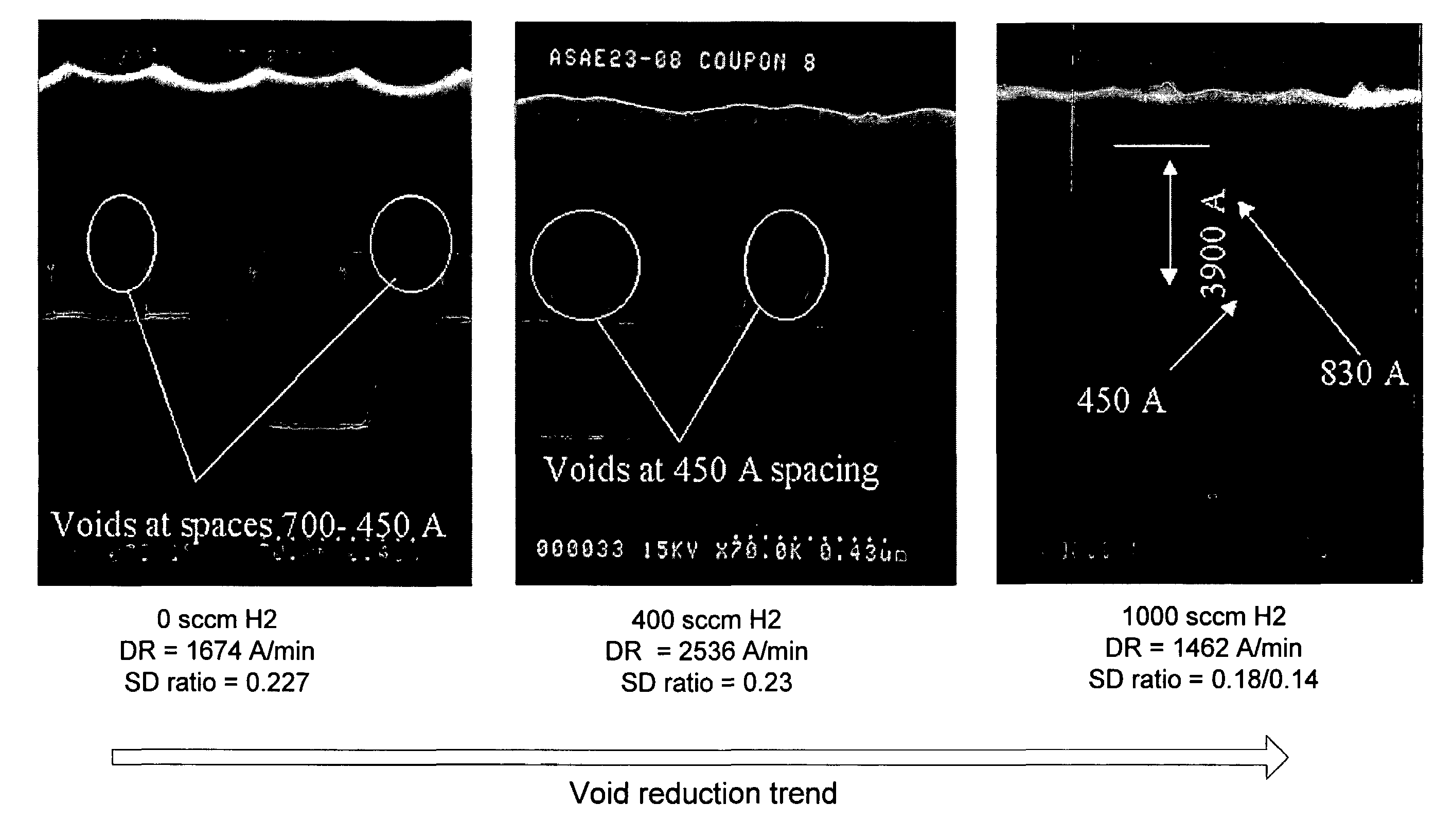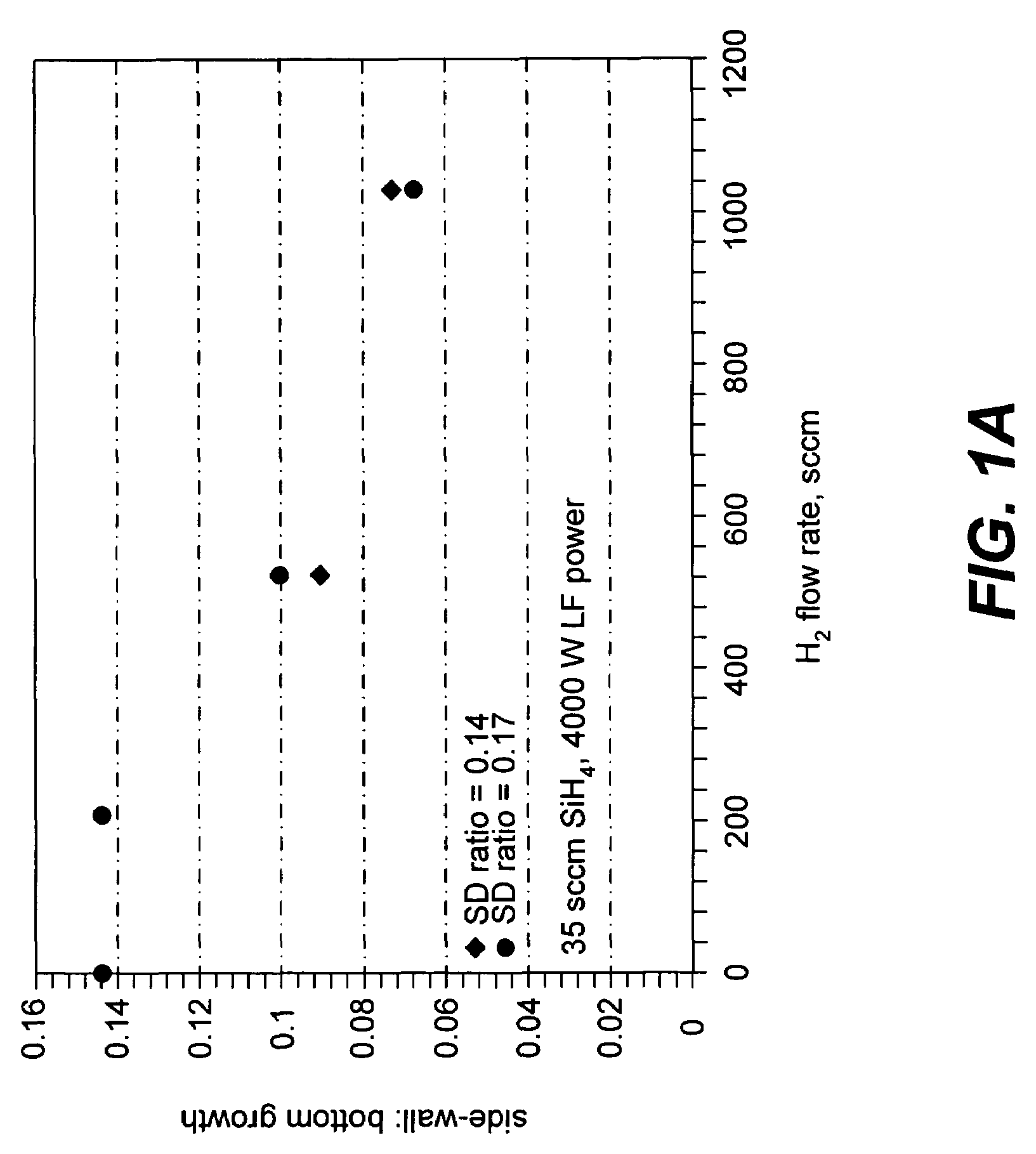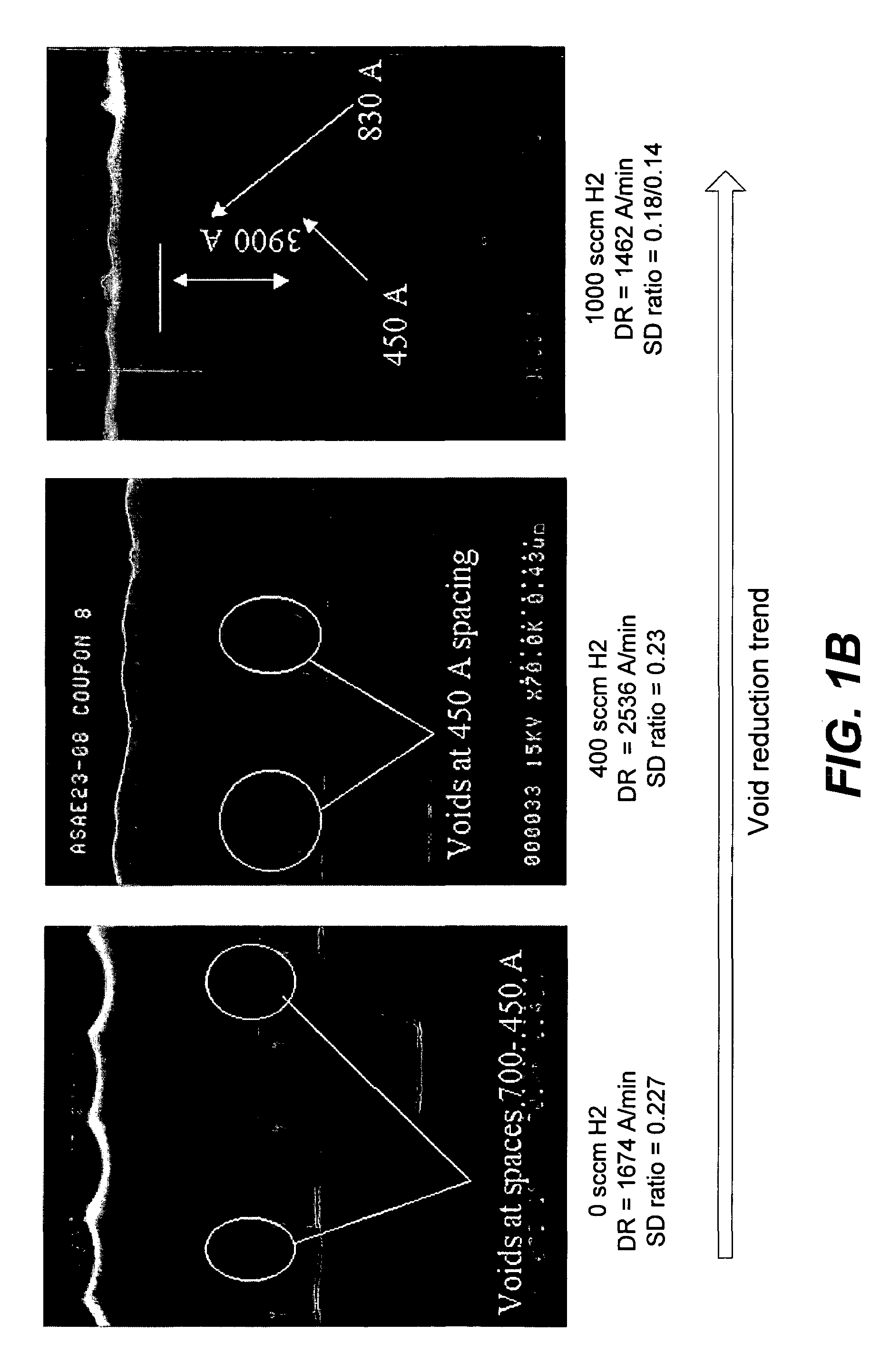Gap fill for high aspect ratio structures
a technology of high aspect ratio and filling, applied in the direction of coating, chemical vapor deposition coating, metallic material coating process, etc., can solve the problems of reducing budgets, void-free filling of high aspect ratio spaces (e.g., ar>3.0:1) becoming increasingly difficult, and the top part of a high aspect ratio structure sometimes closes, so as to reduce side-wall dielectric redeposition, increase flow rate, and effect of growing a dielectric film
- Summary
- Abstract
- Description
- Claims
- Application Information
AI Technical Summary
Benefits of technology
Problems solved by technology
Method used
Image
Examples
examples
[0081]To test the hydrogen gas process, dielectric was deposited on 622 separate wafers using hydrogen containing process gas. The process parameters were as follows:
[0082]
SiH435sccmO265sccmHe40sccmH21000sccmLF Power4000WattsHF Power3000WattsDepo. Time193seconds
[0083]Under these conditions, it was found that the overall film thickness and refractive index were remarkably consistent from wafer to wafer. Further, the film thickness was found to vary by no more than about 2% within the wafer. And the film refractive index was found to vary by no more than about 0.1% within the wafer.
[0084]FIG. 5 shows an FTIR absorbance spectrum of a dielectric film deposited by a standard process (lower curve) and a hydrogen containing process (upper curve). Importantly, both curves have peaks at the same spectral locations and the ratios of those peaks (upper curve:lower curve) are identical. Also, note that there are no peaks associated with Si—H, H2O, or SiO—H. Each of these detrimental species cou...
PUM
| Property | Measurement | Unit |
|---|---|---|
| temperature | aaaaa | aaaaa |
| temperature | aaaaa | aaaaa |
| width | aaaaa | aaaaa |
Abstract
Description
Claims
Application Information
 Login to View More
Login to View More - R&D
- Intellectual Property
- Life Sciences
- Materials
- Tech Scout
- Unparalleled Data Quality
- Higher Quality Content
- 60% Fewer Hallucinations
Browse by: Latest US Patents, China's latest patents, Technical Efficacy Thesaurus, Application Domain, Technology Topic, Popular Technical Reports.
© 2025 PatSnap. All rights reserved.Legal|Privacy policy|Modern Slavery Act Transparency Statement|Sitemap|About US| Contact US: help@patsnap.com



